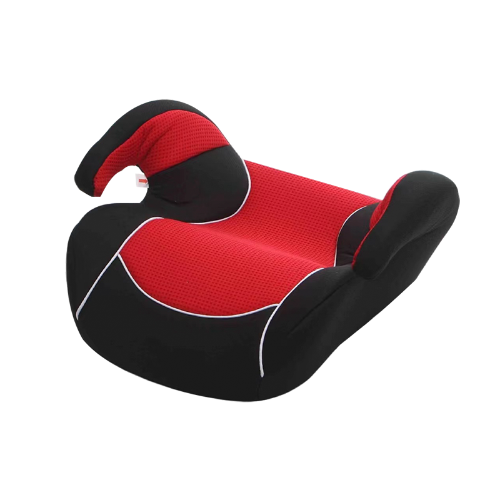A belt-positioning booster seat is a type of child restraint system designed to elevate a child so that the vehicle seat belt fits them properly. The structure of a typical belt-positioning booster seat consists of the following components:
Seat Base: The booster seat features a sturdy seat base that provides a stable foundation. It is usually made of durable plastic or a combination of plastic and metal components. The seat base may have a contoured shape to provide comfort and support for the child.
Backrest: A belt-positioning booster seat typically includes a backrest that supports the child's back and provides additional comfort and safety. The backrest is adjustable to accommodate different heights and may have padding or foam for cushioning.
Armrests: Many booster seats have armrests on either side of the seat. These armrests provide additional support and comfort for the child, especially during longer rides. Armrests also help to define the seating area and keep the child properly positioned.
Belt Guides: Belt guides are an essential feature of a belt-positioning booster seat. They are typically located on either side of the seat, near the child's shoulder area. The purpose of belt guides is to properly position the vehicle seat belt across the child's body. They help guide the lap belt across the child's hips and the shoulder belt across the child's shoulder and chest.
Belt Positioning Clip or Adjuster: Some booster seats may include a belt positioning clip or adjuster. This component is designed to hold the shoulder belt in the correct position and prevent it from slipping off the child's shoulder. The clip or adjuster can be easily attached to the vehicle's shoulder belt, keeping it properly positioned on the child.
Attachment Straps or Anchors: Belt-positioning booster seats often feature attachment straps or anchors that secure the seat to the vehicle. These straps or anchors are used to prevent the booster seat from shifting or sliding during sudden stops or collisions. The attachment system may vary depending on the specific model and manufacturer.
Besides,Belt-positioning booster seats can be classified based on various factors, including design, features, and specifications. Here are some common classifications:
High-back vs. Backless Boosters:
High-Back Booster Seats: These booster seats have a backrest that provides support and protection for the child's head, neck, and torso. They also offer additional side-impact protection and may have adjustable headrests and side wings for enhanced safety.
Backless Booster Seats: Backless boosters do not have a backrest and primarily aim to elevate the child to a proper seating height. They rely on the vehicle's seat and headrest for support. Backless boosters are generally more compact and convenient for travel.
Combination Booster Seats:
Combination booster seats combine a forward-facing harness system with a belt-positioning booster seat. They can be used in a harness mode for younger children and then transitioned to a belt-positioning booster mode as the child grows. Combination boosters provide extended use and are suitable for different stages of a child's growth.
Weight and Height Limits:
Booster seats are typically categorized based on weight and height limits to ensure proper fit and safety for the child. There are specific booster seats designed for children within a certain weight range, such as 30-100 pounds (13.6-45 kg), and height range, such as 38-57 inches (96.5-144.8 cm).
Adjustable Features:
Some booster seats come with adjustable features to accommodate the child's growth and provide a proper fit. These features may include adjustable headrests, adjustable armrests, and adjustable shoulder belt guides. Adjustable booster seats offer flexibility and customization for optimal comfort and safety.
LATCH Compatibility:
Some booster seats feature LATCH (Lower Anchors and Tethers for Children) connectors that allow the seat to be securely attached to the vehicle's LATCH system. LATCH-compatible booster seats provide additional stability and help prevent the booster seat from becoming a projectile in the event of a crash.
Safety Certifications:
Booster seats can be classified based on their compliance with safety standards and certifications. Look for booster seats that meet the safety requirements set by regulatory organizations such as the U.S. National Highway Traffic Safety Administration (NHTSA) or equivalent standards in your country.



 English
English 中文简体
中文简体


















